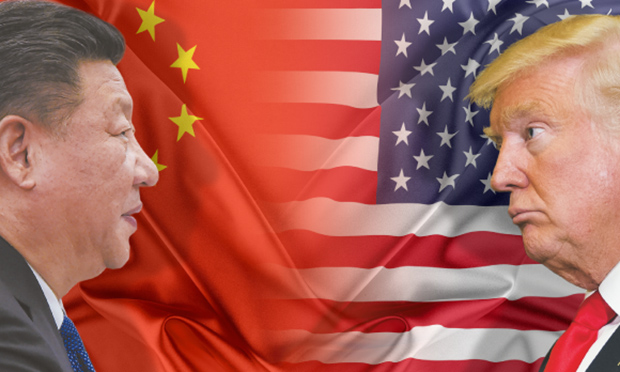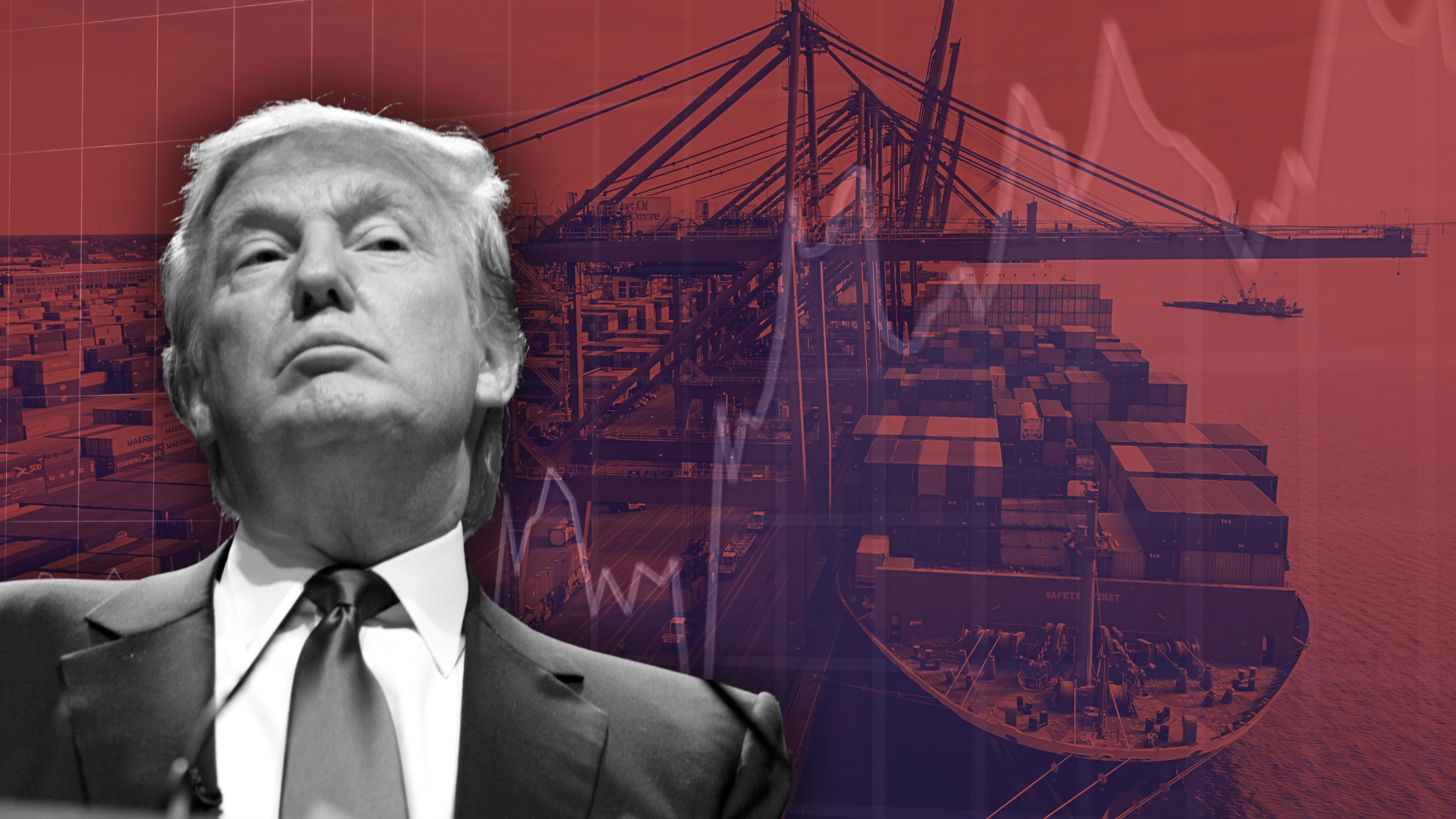China Feels Scorching Sun As Trump Signals Tariff Hike On Imported Semiconductors. Can China Win The Trade War?

China is increasingly feeling the pressure, U.S. President Donald Trump said on Sunday that he will be announcing new tariff rates on imported semiconductors sometime next week. While the details are still under wraps, Trump hinted that there could be some flexibility for certain companies in the industry.
The move suggests that the temporary exemption for products like smartphones and laptops from Trump’s so-called “reciprocal tariffs” on China might not last much longer. The president seems determined to reset how the U.S. handles trade in the critical semiconductor space.
“We wanted to uncomplicate it from a lot of other companies, because we want to make our chips and semiconductors and other things in our country,” Trump told reporters aboard Air Force One, on his way back to Washington from West Palm Beach.
When asked whether devices like smartphones could still be excluded from the tariffs, Trump kept things vague. “You have to show a certain flexibility,” he said. “Nobody should be so rigid.”
Earlier on Sunday, Trump also announced a new national security investigation into the semiconductor industry, suggesting the administration is taking a broader look at the electronics supply chain.
Just two days earlier, the White House had said smartphones and computers would be excluded from the latest round of steep tariffs on Chinese goods, a move that had offered some relief to the tech sector and consumers alike.
But Trump’s commerce secretary, Howard Lutnick, made it clear on Sunday that these exemptions won’t last. He said key tech products, including semiconductors and pharmaceuticals, will face separate tariffs in the next couple of months, regardless of their current exclusion from reciprocal tariffs.
In an interview Lutnick said the administration is preparing what he called a “special focus-type of tariff” on electronics like smartphones and laptops. These duties will be separate from the existing tariffs that were raised to 125% last week.
Beijing, meanwhile, hit back by raising its own tariffs on U.S. goods to 125% on Friday. On Sunday, China’s Ministry of Commerce said it was assessing the impact of the U.S. exclusions on tech products announced late last week. In a statement, it said: “The bell on a tiger’s neck can only be untied by the person who tied it.”
Investor Bill Ackman, a Trump supporter who’s also been critical of the tariffs, urged the president to rethink his strategy. On Sunday, Ackman called for a three-month pause on the sweeping tariffs targeting China. He argued that a temporary 10% rate would be enough to nudge U.S. companies into shifting their supply chains, without creating too much disruption.
The tariff uncertainty has already rattled markets. Last week saw some of the wildest swings on Wall Street since the early days of the COVID-19 pandemic. The S&P 500 has dropped more than 10% since Trump took office in January.

Confusion Reigns as Trump’s Tariff Plans Keep Shifting
As the U.S. tariff drama drags on, critics from Wall Street to Washington aren’t holding back.
Sven Henrich, founder of NorthmanTrader and a well-known market strategist, didn’t mince words on Sunday. “Sentiment check: The biggest rally of the year would come on the day Lutnick gets fired,” he posted on X, taking a direct jab at Trump’s commerce secretary.
That sense of uncertainty has been echoed across political lines. Senator Elizabeth Warren slammed the administration’s ever-shifting trade stance, calling it chaotic.
Adding to the confusion, the U.S. Customs and Border Protection agency quietly dropped a late Friday notice to shippers, listing 20 product categories exempt from tariffs. The exclusions included major tech items like laptops, semiconductors, memory chips, and flat panel displays. temporarily easing concerns from the tech industry.
Meanwhile, in a round of Sunday morning interviews, administration officials attempted to clarify the evolving trade agenda.
White House trade adviser Peter Navarro said the U.S. has extended an invitation to China to come back to the negotiating table. But he also pivoted to criticize China’s role in the fentanyl supply chain, and notably left China off a list of seven countries the U.S. is actively in trade talks with, which includes the UK, EU, India, Japan, South Korea, Indonesia, and Israel.
U.S. Trade Representative Jamieson Greer said there are no current plans for Trump to speak directly with Chinese President Xi Jinping about tariffs. While blaming China for escalating the situation with retaliatory duties, Greer said the administration is hopeful about reaching deals with other countries “within the next few weeks.”
However, not everyone’s feeling so optimistic. Billionaire hedge fund manager Ray Dalio warned on Sunday that the U.S. could be heading toward a recession, or something even worse, if the tariff battle continues unchecked.

Beijing’s Response, From Negotiation to ‘Wartime’ Mode
While the U.S. stumbles through tariff revisions, China appears to have gone full tilt in the other direction, abandoning hopes for a trade deal and gearing up for a prolonged fight.
According to multiple sources familiar with internal discussions, Beijing has shifted to what insiders are calling a “wartime footing.” Civilian government officials in the capital have reportedly been told to cancel vacation plans and stay available around the clock. Social media clips featuring Mao Zedong declaring “we will never yield” are now part of China’s messaging campaign, coordinated by the Communist Party’s propaganda arm.
Officials from the foreign affairs and commerce ministries are said to be beefing up teams dedicated to managing U.S.-China relations, pulling in veterans from the early Trump years. Several stated that China is actively reaching out to other governments hit by U.S. tariffs, including some longtime American allies, asking them to push back on Washington’s approach.
Initially, Chinese diplomats had hoped for a “grand bargain” that might include not just trade, but even TikTok and Taiwan. But after Trump’s latest salvo, dubbed “Liberation Day” by his team, those hopes seem to have collapsed.
Now, Beijing’s message is clear – it’s no longer waiting for a deal. It’s preparing for a fight.
So far, amid the deepening trade tangle that now borders on a diplomatic soap opera, U.S. allies South Korea and Japan remained silent over China’s quiet back-channel diplomacy (clearly caught between a rock and a Trump place).
So now, we have a full-blown economic cold war – suspended for most countries – but not China. Trade between the world’s two largest economies is practically on life support, with even services and entertainment now under scrutiny. Beijing has begun tightening its control on everything from business to tourism, while American movies are quietly being shown the door.
From Red Carpets to Radio Silence
Ironically, this wasn’t always the trajectory. After Trump’s election, Beijing extended an olive branch, or at least a polite wave. Trump even invited Xi to his inauguration. China sent Vice President Han Zheng. A signal, perhaps. But whatever momentum there was, it’s long gone.
The fact is that once upon a time, there were real conversations happening. China’s then-ambassador Cui Tiankai had a direct line to Trump’s inner circle, namely Jared Kushner, but today, while the U.S. side claims they are open to working-level contact, it comes with a hefty condition – only if it serves America’s interest.
The art of diplomacy has been replaced by the art of one-sided deals.
In a twist, China even tried to reach out to Elon Musk, hoping his ties to Trump might unlock the door to more coherent communication, but nothing there.
China’s top diplomat Wang Yi recently tried to meet with Secretary of State Marco Rubio and NSA Mike Waltz but both attempts failed. Despite all the fireworks, Trump claims he’s still open to a meeting with Xi, calling him a “friend,” no less.

When Talking Stops, Posturing Begins
Professor Zhao Minghao summed it up best: “Outreach totally doesn’t work in terms of the Chinese policymaking system.” Beijing needs substance before spectacle. Trump needs the opposite.
And with the way countries have been tossed around – Europe, Japan, South Korea- perhaps China sees no incentive to sit down at a U.S. negotiation table anymore.
While many nations were targeted by the U.S. tariffs for the first time this month, China’s leadership leaned on experience from earlier episodes of the Sino-American trade conflict.
During Trump’s first term, Beijing had already developed a comprehensive retaliatory framework (that playbook, now back in use) includes tariffs, restrictions on around 60 U.S. companies, and tighter controls on exports of strategically vital rare earth elements.
Xi Jinping ultimately authorized an aggressive response, imposing wide-ranging levies even before the U.S. tariffs were formally enacted. The timing, just before U.S. markets opened on April 4, a Chinese public holiday, caught traders off guard and sent equity markets sharply lower. One Beijing official likened the urgency and decisiveness of the move to China’s rapid pandemic-era policy shifts, noting it bypassed the usual interdepartmental consultations.
Still, some voices within China proposed more restrained options.
Trying To Find Friends
Meanwhile, amid growing geopolitical strains, China convened its overseas diplomats in Beijing this week for a high-level strategy meeting aimed at consolidating the national response.
China also reached out to several foreign governments – some of which are currently in trade talks with Washington – via formal letters emphasizing China’s position – commitment to multipolarity and warned against unilateral U.S. economic pressures, mirroring public messaging from Chinese ministries.
Beijing is also quietly lobbying G20 member states to consider endorsing a joint statement supporting the multilateral trading system, according to an EU diplomat. However, the diplomat noted that China’s proposal did not directly address common international criticisms, including concerns over industrial overcapacity, state subsidies, and what many see as non-market behaviors by Chinese firms.
Chinese officials have dismissed those criticisms, arguing that their manufacturing strength is the result of genuine comparative advantage and contributes to global economic development.
Domestically, Beijing has focused considerable attention on shaping public sentiment. An April 7 editorial in the People’s Daily that urged calm went viral on Chinese social media, reposted by users urging national unity. Meanwhile, state media began placing renewed emphasis on economic self-reliance and consumer-driven growth, amid a broader pivot away from export-dependence, particularly as real estate woes continue to weigh on the economy.

Can China Win The Trade War?
Still, while China is often seen as having strategic advantages in a long-drawn trade war with the U.S., many of those perceived strengths don’t hold up under scrutiny.
Take the cultural notion of “eating bitterness”, the idea that Chinese citizens are more resilient than Americans. That might have worked in an era of austerity, but today’s urban Chinese middle class is more concerned with lifestyle upgrades than sacrifice. The Communist Party’s hold on power hinges not on hardship, but on its ability to deliver growth and rising standards of living.
China’s policymaking, while top-down, is bogged down in layers of bureaucratic deliberation. Xi Jinping may be in firm control, but he still consults a core group of loyal officials. Ironically, when it comes to trade, the U.S. now operates more like a one-man regime. Trump has near-unilateral control over tariffs, raising or cutting them without needing Congressional approval, a lever of power Beijing lacks.
Still, China does have some levers of retaliation. It can hike tariffs (now at 125%), launch investigations into U.S. firms, and limit access to its massive market. But these come with costs: foreign companies already wary of China may flee faster, further draining investment and technological inflows. Beijing’s attacks on Hollywood, agriculture, and U.S. exporters may feel satisfying but could deepen China’s post-COVID economic slowdown.
So that leaves us, what about rare earths?
China dominates global supply, but most U.S. firms import components, not raw materials. If China cuts exports, it risks speeding up global diversification efforts. Meanwhile, using the yuan as a tool, by devaluing it, could backfire by stoking inflation and capital flight. Dumping U.S. Treasuries would only strengthen the yuan, making Chinese exports more expensive, the opposite of what Beijing wants.
Ultimately, China may bide its time. With tariffs at sky-high levels and prices rising in the U.S., economic pain will mount, especially for poorer American consumers. Democrats are already branding tariffs a “Trump tax,” and calls for a resolution may grow louder as the impact hits home.
Adding to the complication – Chinese firms are likely to route goods through third countries to avoid tariffs, undercutting Trump’s plans to fund policy agendas through tariff collections.
Still, both sides have reasons to avoid escalation. Beijing has signaled it’s open to talks, and Trump, true to form, has begun flattering Xi, calling him “a proud man.” That could be the clearest sign yet that even hardliners realize that in a battle of attrition, both nations stand to lose.




